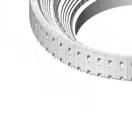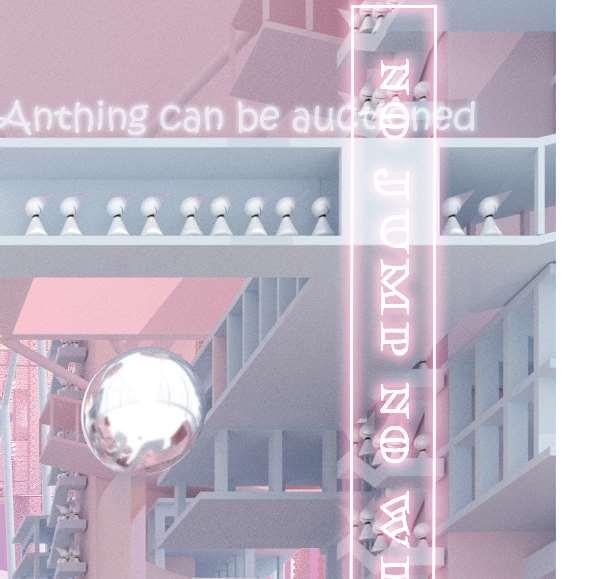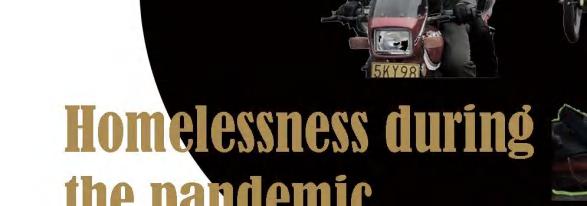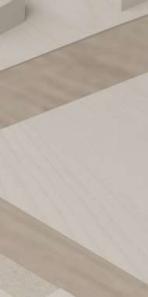

















PORTFOLIO 2018-2022 APPLICATION NUMBER: 23148126 JUNJIE HUANG +86 15316128017 JUNJIEHUANG1998@OUTLOOK.COM
Junjie Huang

+086 153 161280 17
JunjieHuang1998@outlook.com
EDUCATION
Ton iUniversity
Urbanplanning Bachelor Sep2018-Jan 2020 Sep2021-Jul2023
Experimental classofcompoundtalent (Architecture) Feb2020-Jul2021
Civilengineering Sep 2017-Jul2018
RESEARCH EXPERIENCE
City Walkplatformdevelopmentbasedon LegibleCity Mar2019 - Mar2020
DesignforMy City - DMC UrbanDeformedSpace OptimizationPlatform Mar2020 -Mar 2021
INTERNSHIP EXPERIENCE
Ton iArchitectural Design Institute Jul2018 - Aug 2018,Shanghai
Shanghai OriginalArchitecturalDesignO ce Jul2021 -Sep2021,Shanghai
PROJECT EXPERIENCE
'Xuhuihuatian' urbandesign Jul2021 - Sep 2021,Shanghai
Theconstruction of Candong primary school Sep2019 - Feb2020, Qiandongnan,Guizhou
Theconstruction of DimenPrimary School Sep2018 -Oct 2019, Qiandongnan,Guizhou
SELECTED EXTRA-CURRICULAR PRACTICES
Qiandongnan,GuizhouVolunteerTeaching andResearchingTeam Jul2019 - Sep2019, Qiandongnan,Guizhou
HONORS & AWARDS
DesignShenzhen2022 Dec2022, ShenzhenGovernment
ArchidotsInternational StudentCompetition Oct2022,International(Outstanding project) archiDots
"SharedMETA-JIAYUAN" Students CourseWorksofUrban Design Aug 2022,International(the ThirdPrize), WorldUrbanPlanningEducationNetwork
"GuangliandaStar"ofthe3rdShanghaiUniversityStudentDesignCompetition Dec 2021,Shanghai(FirstPrize), ShanghaiSurveyandDesign IndustryAssociation
6thChinaInternational"Internet+"Competition Mar2020, University Stage(BronzeAward)
MULTI COMFORTStudentContest 2020 Mar2020,16thNational stage (Second Prize), SAINT-GOBAIN
The12th "ChallengeCup"Shanghai CollegeStudentBusinessPlan Competition Mar2020, Shanghai(SilverAward),Ministry ofeducation
China'spractice program model 100thebestcollegestudentteam Jan2020
Dialoque withbauhaus inthepreliminarycourse inton i's architectual education Nov2019
TheArchitect-TeamzeroAwardInternationalArchitectureDesignCompetitionforCollegeStudents Oct2019,International(theThirdPrize)
Ton iInstitute ofArchitectureandPlanning"AcademyAward"ArtCompetition Nov2018,Ton i(FirstPrize)
Ton freshmanbasketballgame Oct 2018, Ton i(championship)
MISCELLANEOUS
Skills: Proficientin SU, Rhino(grasshopper),AdobePs,Ai,Id,Pr,lr,Cubase,CAD,lumion,vray,enscape
Sports:Basketball(Captain ofthecollege team),badminton
Languages: Chinese(native), English(fluent)
CONTENTS
ACADEMIC PROJECT
01 CALABI-YAU-METAVERSE
The metaverse has no "Negative Exterior": Social space mapping based on Calabichu's mathematical model
02 Dispersed Mixed Habitat
Discrete Spaces and Spatial Justice in Cities
03 Y
Space, structure, dislocation
04 Village in Multiverse
Rustic design from site prototypes
05 Rural
Primary School Library
A building designed and built in collaboration with local residents
01 CALABI-YAU-METAVERSE



The Metaverse Has No "Negative Exterior": Social Space Mapping Based On Calabichu's Mathematical Model








Meta-universe is based on extended reality technology to provide people with immersive virtual experience and satisfy people's desire for a better world. However, with the continuous development of metaverse-related technologies and business ecology, leading to increasingly significant problems of various kinds in different application scenarios. In the process of research, we found that every time the relevant future concept is pushed out, it involves the imagination and boasting of the flattening of the new world. The meta-universe is as cruel as the real world, with four core forms of hegemony: negative externalities of everything arithmetic, negative externalities of everything tokens, negative externalities of everyting logistics, and negative externalities of eveything spectacle
Project exhibited at Design Shenzhen2022

Academic project





Team Work(2)
Team co-worker:Weihan Zheng

Rolein team: Conceptual Design 70% Modeling70% Rendering 100% Drawing 45%
Time: June 2022-October 2022




Instructor: Yan Yu
E-mail: yimyvu@szu.edu.cn



NegativeExternality

MAINTHEORYPHILOSOPHICALPRINCIPLE METAVERSE

Amouthbeing attachedtoanother mouth,ortoanipple, ordrinkingfroma mountainstream

MetaphorCalabi-YauFeaturesManifoldDimensionInsideandoutsidePlanarizationMouth














G.Deleuze:“Fold”
X,aretransformedthroughhumanindustryand inductedintohumansociety,atX1.TheYaxis representstwoeffectsoftheprocessesmoving alongtheXaxis;oneisentropicandtheotheris accelerating.
Thedualisticdialectic betweentheinterior andexteriorofthe uterusisthekey totheSlotterdeck spheretrilogy.

PeterSloterdk:“SpheresTrilogy”
Theadvantagesoftheplatform'snestedplatform hierarchyprofoundlyinfluencethestructureof labourandvalue-addedintheinformationsociety.


TonyRobbin:SpaceDimension
Mathematicscan defineandconquer theextraspaceand makefourdimensional geometryintoa sensibleworld.








































TOPOGRAPHY OF METAVERSE


The development of the thing itself is the development of the opposites in the thing, in the struggle and unity of the opposites, to achieve the dialectical movement from low to high, its basic direction, the general trend is forward, up, is a spiral or wave type of zigzag process.


CORESCENES OFTHE METAVERSE
CALABI-YAU MANIFOLD
Y Y X Y' X' Y' INSIDE BASE SUPPORT Planarization
EVOLUTIONOFEXPLOITATION DIMENSION n=32n=16 n=8 n=4n=2 n=64 Calabi-YauManifold TECHNOLOGY YEAR Singularity/Fold FormsofExploitation ConcealmentofExploitation META ReactServerComponent Exploitation ofupperand lowerclasses Exploitation withinthe class 2009 NodeJS 1996 CSS 1995 JavaScript 1993 HTML PHILOSOPHICALTHEORY&EVOLUTION
CONCEPTGENERATION
X' X' X' X' Y' Y' Y' X X X X XXY'Y' YYX'X'YY' Y Y Y Y Y Y Y' Y' Y' Distribution Hole Vortex Clip
Distribution HoleVortexClip
Outside Outside Outside Outside Outside Outside Outside Outside Outside Outside Outside Outside Outside Outside Outside Outside Outside Inside Inside Inside Inside Inside Inside Inside Inside Inside Inside Inside Inside Inside Inside Inside Inside Inside Inside Inside
DISTRIBUTION




MOUTH

OVARIES



Chapter 1, based on the story of infosys in India, reveals the technical exploitation of the meta-universe. The metauniverse is built on the basis of code work without digital farmers. It gets the coders to willingly work as part of the underlying operating mechanism by portraying to the potential populationof codersthedream of abetterlifethroughcodework.
Chapter 2 is based on the bridge jumping incident at Mapo Bridge in South Korea. It reveals the economic exploitation in the metaverse. The metaverse exploits the users of the metaverse financially by portraying a highly rewarding, fair and free marketplace for trading, leaving them unaware of the economiccrisistrap.





Chapter 3 reveals the logistical exploitation of the metaverse based on the incidents of uber's squeezing of drivers. The metaverse offers a variety of new forms of logistics. It exploits the labour of logistics workers by promoting the new logistics methods in the form of fair opportunities andconvenience.





Chapter 4 is based on the events of Room N in Korea and reveals the entertainment exploitation of the metaverse. The meta-universe entertains everything. Through deceptive channels of fame, he tricks ignorant metaverse users into the entertainment chain, exploiting them sexually and for labour, and designing the mutual exploitation ofthebottomusers.





Chapter 1: MOUTH CITY: negative externalities of everything ARITHMETIC HOLE Chapter 1:
MOUTH CITY
Chapter 2:BRIDGE CITY
Chapter 3: ROAD CITY
Chapter 4:OVARY CITY
BRIDGE
ROAD
The overall shape is similar to that of a mouth, and when sucked in it is an abyss.
The overall shape of the road is similar to that of a motorway, so that vehicles and people can pass through it quickly.
The shape runs up and down like a bridge, which is longer and taller, a metaphor for the uncontrollable development of things.
The overall shape resembles the female ovaries, which is not visible from the outside, so it is deceptive.
The US Customs, is like teeth, controlling the flow of people at the entrance at the border, allowing only a small number of people to enter.
Pudong is at the border and centre of the entire city, acting as a bridge between inside and outside.
The boundaryof Wall Street is endless capital, and the road to the far side is hard and long.
While there is prosperity outside the city, many dark corners of the city are hidden inside.
The process of industrial renewal crushing the real world with the convenience of the online world.
The industry is in the process of rapid internal and external transmission of the best and the worst.
The more bitcoins are mined, the more power is consumed by more dams.
Outside the ballroom, the lights are bright and the crowd is full of people, while inside, a silent crime is being committed.
CUSTOMS PUDONG
BOUNDARY
DARK CORNER
SPIRAL UPWARD EXTENSION
VANISH POINT
VORTEX CLIP
WHIRLPOOL
NODEPROTOTYPEMETAPHORSHAPECITY TYPE SPATIAL ANALOGY OF METAVERSE WITH CALABI-YAU MODEL
Chapter 2: BRIDGE CITY: negative externalities ofeverything TOKENS





















































































Function: Coder's “work in home"o ce Event: East India Company Helps Coders to Travel to the USA. Function: Coder's “work in home"o ce Event: East India Company Helps Coders to Travel to the USA. Function: Uber Compant Event: Uber Strike Function: Viaduct Event: Uber Strike Function: Organ Hospital Event: Darknet Organ Trading Function: Auditorium Event: Room "N", Metaverse Sexual Assault Function: Stage, Voyeur Club Event: Room "N", Metaverse Sexual Assault Function: Building,bridges, Auction Centers, Hospice Ferris Wheel Event: Korean Mapu Bridge Jumping Working on the Company Ordinary Taxi Gril Wants to be an idol Outside Customs Small Demand for Coders Traditional Currency Uber Car-hailing Taxi Driver IT Revenue Increase Online Car-hailing Income Increased Nightclub earn more money More Brokerage and Revenue Hospital Revenuse Bitcoin Capital Income Increased Platform Revenue Accumulation Dancer earn more Coders'Free Time Reduced Decrease in the Number of Taxi Loss of female dignity Lower Passing Rate di culties for 30+ coders Bitcoin users' increased risk Drivers are exploited Driver Spends Money Work in Home Online Car-hailing Nightclub Dancer Inside Customs demand for 30- coders Bitcoin Online Uber Platform Audience Company Online Car Plateform Nightclub Customs and Intermediary Online Car Plateform Bitcoin Plateform Online Car Plateform Club Dancer Coders Taxi Driver dancer Passed Coders Taxi Driver Bitcoin Holder Car-hailing Driver Involution Plateformization Mode Sexual Desire Industry Monopoly Plateformization Mode Capital Monopoly A liate System Normalization of Entertainment No 30+ Workers here! No unemployed here! No one is forced here! No old people here! No unfair decisions here! No protesters here! No one here has no chance! No one is exploited here!
TYPOLOGY








































PLAN Chapter 3:ROAD CITY: negative externalities ofeverything LOGISTICS EXPLOITATIONCHAIN STORY CHAPTER InfosysTown Thenegative externalities ofeverything arithmetical Thenegative externalities ofeverything logistic Thenegative externalitiesof alllandscaping Thenegative externalities ofeverything tokenised AlgorithmITCompanyProgrammersBrainHighincome UberTownOline Service IoTUberdriverLaborforceSharing Economy NHouseLivestreamLiveStreaming Platform WomenSexual exploitation Tittytainment Bitcoin Town BlockchainUpperclassToken Buyers TokenFinanceDecentralization INDUSTRY ASCENSION INSIDEOUTSIDEMOUTHPLANARIZATION Chapter1Chapter2Chapter3Chapter4




























Chapter 4: OVARY CITY: negative externalities ofeverything SPECTACLE
02 Dispersed Mixed Habitat
Discrete Spaces and Spatial Justice in Cities LOCATION:Xuhui Riverside, Shanghai

The project explores the use of space by the disadvantaged groups who are new to the city through basic modules, blocks and superblocks, simulates the discrete parts in different combinations of functions through WASSP, and aggregates them into highly dense spatial organization as a possible space for shaping the disadvantaged groups and projecting planning strategies in it. The organic urban form is conceived from the "Habitat 67". The project avoids gentrification and spatial compartmentalization and over-concentration of poverty by combining and controlling functions.
Personal academicproject inschool
Time: October 2022-December 2022
Instructor: Meizi Li, Mi Diao
MAPPING:Siteanalysis



















Xuhui Riverside, Shanghai


CONCEPT





Zhengda Lecheng, green colorful city completed. The renovation of the Long Museum was completed, and the related buildings of the railway station were demolished. The high-end residential area on the west side and the commercial area on the east side were completed. Nanyang High School completedtheupdate.
The use of prefabricated structural technology is not only inexpensive, but also greatlyacceleratesconstruction.







Many workers in Shanghai have been homeless during the pandemic, and the lockdown of space has made it impossible for them to commute between their homes and workplaces. Even after the pandemic, they still faced problems such as poor housing quality, inability to afford closer housing, and inability to adapt to changes in the number of workers. There is a need for a low-cost, fast-build, and geographically unrestricted housing model to provide workers withahome in thebig cities.

N S WE 0km1km 1km 2km3km5km6km7km 9km 12km 13km 2004 2008 2014 2018 SITE
The west side of the riverside is the North Ticket Coal Wharf, the east side is the Nanpu Railway Station, and the hinterland is mostly industrial supporting houses and self-built houses.
The southeast pier was demolished.
The self-built houses in the base werecleanedup.
Xuhui Riverside Green Land runs throughthe whole line.










































































PART:Functionbox A.Commercial blockB.Public Space C.O ce block D.Residence blockE.Service block F.Transportation G.Temporary Structure




























PLAN AGGREGATION:communityunit
Morphological restrictions



Public space restrictions
Pre-existing building restrictions















Determinethespatial location
















 Proportionofblocktype
Proportionofblocktype


































 The relationship betweenthe factory andHabitat
The relationship betweenthe factory andHabitat
Sceneof settlement
The relationship betweentra c corridors and residences







03 Y










Space, structure, dislocation

























LOCATION:Siping
Road, Yangpu District, Shanghai, China
Siping Road divides the Ton i campus into two, and we hope to explore the issue of how to reduce the fragmentation between the two. The proposal hopes to use the student activity center as a trigger point, forming a flexible connection between the playground and the building of the College of Life Sciences through the continuity of the ground, and will stimulate the club activities to happen on the bridge through the spatial setting, so that the student activity center across the bridge will become the interface for Ton i University to show to the outside mainly to Siping Road, and also provide a higher urbanity for the relativelyclosedcampus learning life.
This program hopes to explore the possibility of structure and space, and create interesting and lively activity space through structure and space dislocation. In terms of spatial shaping, this proposal improves the flexibility of spatial arrangement through the dislocation of structure and space, while at the same time the structure becomes part of the space, which can be used and traversed, and the structure's temporal andtemporal appearance reshapes theuser's perceptionofthestructure, while the space is enhanced in richness bythe addition of the structure.


First prize of 2021 'Quanta Star' 4th Shanghai Student Architectural Design Competition
Academic projectin school
Time:

March 2021- June 2021
Instructor: Fan i Wang, Zhun Zhang
500M
B East side campus
200M
100M
West Side Campus

LOCATION Siping Road,Yangpu Qu, Shanghai 100M 200M 300M400M


N S





D Siping Road

W E

MAPPING: A B C D B East side campus A West side campus


SiteAnalysis MASSINGGENERATION Spaceusedemand CLocal residential areas D Siping Road

















Connected spaces








A West side campus
East Side Campus
Space without any structure 83% 67% 51% 67%
EXPLOSIONAXONOMETRY



Roofing logic:

For the roof in addition to playing a covering role, I want the roof to also be under thewholedislocationlogic.
under the logic. In the planar direction, the roof that follows the ramp and following the bridge, the roof covering the atrium and the top of the functional boxes are dislocated.

















Vertically direction, the tops of each place are disconnected from the main structure to a certain extent, and this disconnection is both logical and this separationis both logical and spatial.



Structure selection:



For the50mspan,we chose the simplest simple truss, and increased the height of the truss in the middle section of the main span, and reduced the section height of the deck girders to ensure the clearheightunderthebridge,andshared the deck load by connecting the tension cablestotheuppermaingirders.



Thedecksidetiesservetosolvetheside overhang." A steel frame structure was chosen for the "function box" and formed the façade of the frame structure. For the bridge deck, the concrete beam and column structure was chosen to be relatively suitable and simple due to the needofplantingturfandotherneeds.
After the general structure was determined, the local structure was finetunedaccordingtothemisalignedoverall logic,thespecificneedsofthespaceand themechanicalneedsofthestructure.
SPATIALANDSTRUCTUALNARRATION































1 24-hourstudyroom 2 SunkenCourtyard 3 DiscussionArea 4 Exhibition 5 Through-heightatrium 6 Gymnasium 7 Dressingarea 8 Courtyard 9 Outdoor sportsarea 10 Restroom 11 Watercloset 12 Sunken entrance 0.6m elevation plan 1 Ramps 2 Grassslope 3 Rampentrance 4 Corridor 5 Exhibition 6 Coffee area 7 Reporthall 5melevation plan 1 Ramps 2 GreySpace 3 small activity area 4 Large activityarea 5 Reporthall 7.5m elevation plan PALN 0M10M30M50M 0M10M30M50M 0M10M30M50M
















SECTIONSCENEOFCRITICALNODE
Bridge deck space entrance
24-hour studyroom
Through-height atrium
Sunken Courtyard





















04 Village in Multiverse

Rustic design from site prototypes




LOCATION:Dimen Village, Guizhou province, China
The context of China's rapid urbanization is a shift and change in urban and rural population and productivity.Because of the changes in productivity and relations of production, an imbalance in the function and space of the village occurs, which may lead to the gradual disappearance of the village, orthe urbanizationof the village.

Village in Multiverse proposes three designs for the future evolution of the village based on two major trends, projecting the traditional symbols and folk memories of the village into the architectural design, and combining the spatial layout with new relations of production and the social structure of the village. The design proposes three possibilities: 1, to transform the village into a productive agricultural space; 2, to explore and integrate the local industrial chain for the stock development of village revitalization; 3, to avoid the backlash of urbanization caused by the expansion of the village and propose an adaptive incremental development,which we choose to explorefurther.
Reference: Koolhas, Rem. Countryside: A Report. Taschen, 2020. ISBN 9783836584395 FEI XIAOTONG.From theSoil. TIANJINRENMINCHUBANSHE, 2022. ISBN9787201183497
Outstanding prjects of archidots Awardees 2022


Academic project
Team Work(3)

Team co-worker:Kaiyi Ding, Min in Shi
Rolein team: Conceptual Design 50% Modeling 70%Rendering100% Drawing40%
Time: September 2021-November2021
Instructor: Kai Wang, Wenbo Zhang, Yuhui Zhu
SITE:HistoryTimelineandSiteAnalysis






















PLANA:TheVanishingVillage PLANB:TheMaintainingVillage PLANC:TheBoomingVillage
MASTERPLAN:TheBoomingVillage



BIRDVIEWPERSPECTIVE:SpatialStrategyofTheBoomingVIllage



















TYPOLOGY:Plug-inBoxeswithMultipleFunctions































TYPOLOGY:PrototypeoftheDrumTower






05 Rural Primary School Library
A building designed and built in collaboration with local residents

LOCATION:Dimen Village, Guizhou province, China

In the overall construction process, the relatively harsh cost and relatively inaccessible local conditions constrained the design concept. We worked with the carpenters to design as we built. By researching the local level of construction and craftsmanship, we used timber framing as the primary method of architecture, while taking prototypes from the local wokura architecture.Werespondedtothesurrounding relationshipwith an organic and low-profilegesture.










Practical Project Team Work
Team co-worker:Wenda Sun, voluteer team of Ton i inDimen
Role in team: Conceptual Design 30% Modeling and Rendering 70% Drawing



60%


Time:









June 2018-October2019
Instructor: Yuhui Zhu












Prototype architecture:Granary

The structure of the granary is very similar to that of a house, and can be seen as a small dwellingwith onebay andonedeep.


Construction tools

The processing of small wooden work is almost mechanized, and modern tools such as spirit levels and metal triangular rulers have completely replaced traditional measuringtools.







Building material

The materials used come from mountain forests, and generally felled trees need to be left for one or two years to dry before they are suitable for use.




Structure

The pattern of brick houses in the village ranges from one-wall, to one-story brick structure plus wood structure to two-story brick structure to wooden structure,and the wooden structure gradually loses its senseof existence.






Building construction Houses with brickconcrete systems are generally castin-place concrete structures, and brick walls only play the role of maintaining the structure.


SITE RESEARCHRESEARCH : local construction techniques
The theater and library are connected, and the status and function of use can be changed through temporary devices.




























































PROJECT PROGRESS DIAGRAM: design process & on-site construction process PHOTO OF THE BUILDING
View fromthe country road
View fromthe playground



























DETAIL OF THE BUILDING
Newand oldbuildings combine nodesNew and oldbuildings combine nodes
Roof structure
THE BUILDING IN USE
Newand oldbuildings combine nodes
Windows andbookshelves
The large ladderin use
The entranceto theold buildingserves as aprojection screen The large ladderin use














































































































































































































































































































































































































































 Proportionofblocktype
Proportionofblocktype


































 The relationship betweenthe factory andHabitat
The relationship betweenthe factory andHabitat









































































































































































































































































































































































































































